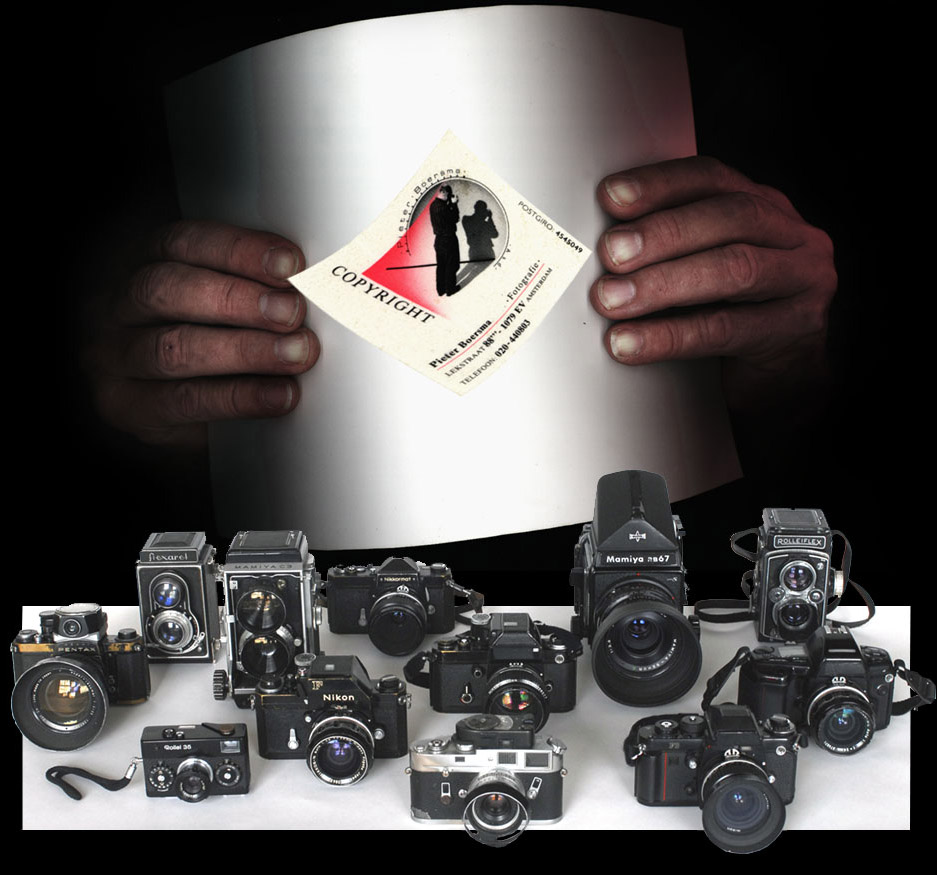Photobook publisher 'De Verbeelding' produced this book "Onverklaarbaar bewoonde woning" about the rise of new suburbs in Amsterdam and the related demise of neighbourhoods in the old center and the 19th century city girdle. It shows how functionalist economic and urban planning ideas of the sixties and seventies of last century were confronted by a fierce opposition of citizens movements. The main focus of the book is the new satellite town Bijlmer and the old inner town neighbourhood Nieuwmarkt, linked by the first subway line of Amsterdam (build in the period 1970-1982). The construction method of this 'underground' line, in the old city center, made it necessary to demolish everything above ground first. For the historical Nieuwmarkt neighbourhood this meant massive demolition of houses. An inner city highway borderd with office buildings was planned as replacement after the completion of the subway works. The housing function of this part of the inner town would thus dramatically be deminished. These plans met a growing opposition which coincided with the rise of the Amsterdam squatters movement born as a reaction on a structural housing shortage in the Netherlands. |
In the end this resistance did not stop the underground line under construction, but the rest of the planned subway lines - having similar effects - were cancelled. The highway and office plans were scrapped also and social housing projects were implemented on the basis of a reconstruction of the historical street layout. This protest movement thus heralded a fundamental change of urban planning policy in Amsterdam.
The photographs cover a period of fourty years and show a landscape of 20th century urban transformations and social confrontations. Tjebbe van Tijen - one of the neighbourhood activists of that time - wrote a historical essay for this book.
The title "onverklaarbaar bewoonde woning" is a pun in Dutch meaning a 'habitated' house inspite of being officially declared 'uninhabitable'.
 Click button to listen to a radio interview by Anton de Goede VPRO 'De Avonden' with Pieter Boersma and Tjebbe van Tijen (in Dutch). Click button to listen to a radio interview by Anton de Goede VPRO 'De Avonden' with Pieter Boersma and Tjebbe van Tijen (in Dutch).
 Click button to order the book on-line. Click button to order the book on-line. |
|
 Annemarie De Wildt conservator Amsterdams Historisch Museum: "Niet esthetiseren, zo direct mogelijk zijn. 'Het lukte niet altijd met dat niet-esthetiseren,' zegt hij lachend als ik zeg dat sommige foto's toch ook prachtige composities zijn. Het is goed dat hij er was en op het juiste moment afdrukte. Dankzij fotografen als Pieter Boersma bestaan er beelden van dit recente verleden van Amsterdam en de strijd van bewoners tegen de 'city-vorming'." Click logo for full article.... Annemarie De Wildt conservator Amsterdams Historisch Museum: "Niet esthetiseren, zo direct mogelijk zijn. 'Het lukte niet altijd met dat niet-esthetiseren,' zegt hij lachend als ik zeg dat sommige foto's toch ook prachtige composities zijn. Het is goed dat hij er was en op het juiste moment afdrukte. Dankzij fotografen als Pieter Boersma bestaan er beelden van dit recente verleden van Amsterdam en de strijd van bewoners tegen de 'city-vorming'." Click logo for full article....
 Recensie van Han Schoonhoven: "Er ging veel mis bij de aanleg van de eerste metrolijn in Amsterdam, die vanaf de jaren zeventig het Centraal Station met de Bijlmer verbindt. Daarvan getuigt Onverklaarbaar bewoonde woning, de recente publicatie van Pieter Boersma. Fred Schmidt, van uitgeverij De Verbeelding, vond in Boersma's archief een groot aantal dramatische beelden. Activist, beeldhouwer en historicus Tjebbe van Tijen schreef er een geïnspireerde tekst bij. De kleinbeeld-zwart-wit foto's van Boersma zijn sober en staan volledig in dienst van het verhaal dat hij wil vertellen, zonder stylistische pretentie. Er gebeurde iets in een bepaalde omgeving en Boersma legde het vast zoals het was. Wanneer je al die foto's hebt bekeken zie je de kwaliteit ervan: duidelijker kun je het niet in beeld brengen." (...) Klik logo voor volledige recensie... Recensie van Han Schoonhoven: "Er ging veel mis bij de aanleg van de eerste metrolijn in Amsterdam, die vanaf de jaren zeventig het Centraal Station met de Bijlmer verbindt. Daarvan getuigt Onverklaarbaar bewoonde woning, de recente publicatie van Pieter Boersma. Fred Schmidt, van uitgeverij De Verbeelding, vond in Boersma's archief een groot aantal dramatische beelden. Activist, beeldhouwer en historicus Tjebbe van Tijen schreef er een geïnspireerde tekst bij. De kleinbeeld-zwart-wit foto's van Boersma zijn sober en staan volledig in dienst van het verhaal dat hij wil vertellen, zonder stylistische pretentie. Er gebeurde iets in een bepaalde omgeving en Boersma legde het vast zoals het was. Wanneer je al die foto's hebt bekeken zie je de kwaliteit ervan: duidelijker kun je het niet in beeld brengen." (...) Klik logo voor volledige recensie...
|
 Corrie Verkerk in 'Het Parool' van 11 september 2010: "Zijn archief bevat veel foto's uit de woelige Nieuwmarkt- en metroperiode. 'De tijd dat het stadsbestuur geen enkele prioriteit had voor stadsherstel,' aldus de tekst op de achterflap van zijn boek. 'Wel bestonden plannen om een metrolijn met daarbovenop een vierbaansweg dwars door de stad aan te leggen, waarbij hele wijken gesloopt zouden worden.'
Bij het verzet daartegen was hij nauw betrokken. Boersma: "Die Nieuwmarktperiode wordt altijd vastgepind op de ontruimingen. Maar het ging ons vooral om het behoud van het oude stratenpatroon. Dat is gelukt." Click logo for article (text only)... Corrie Verkerk in 'Het Parool' van 11 september 2010: "Zijn archief bevat veel foto's uit de woelige Nieuwmarkt- en metroperiode. 'De tijd dat het stadsbestuur geen enkele prioriteit had voor stadsherstel,' aldus de tekst op de achterflap van zijn boek. 'Wel bestonden plannen om een metrolijn met daarbovenop een vierbaansweg dwars door de stad aan te leggen, waarbij hele wijken gesloopt zouden worden.'
Bij het verzet daartegen was hij nauw betrokken. Boersma: "Die Nieuwmarktperiode wordt altijd vastgepind op de ontruimingen. Maar het ging ons vooral om het behoud van het oude stratenpatroon. Dat is gelukt." Click logo for article (text only)... |
|
 My 2006 photobook: "Foto © Pieter Boersma" My 2006 photobook: "Foto © Pieter Boersma" |
|
This book published by 'De Verbeelding' has been assembled in a special way. Twelve people from the photographer's surroundings, each separately did choose ten photographs on a specific subject, and also wrote an account explaining their choice. Warna Oosterbaan's choice was Jazz, Martin Schouten Work, Joël Bons Canada, Titus Yocarini Portraits, Carry van Lakerveld Music-theatre, Pauline Terreehorst Nieuwmarkt/Bijlmer, Maarten Kloos Amsterdam/nederland, Tjebbe van Tijen Playing space, Frits Bolkestein Europe, Conny Braam Africa, Gerrit Jan Wolffensperger Visual arts, and Femke and Hanneke Boersma Family. Merel Bem, journalist of the Dutch daily De Volksrant wrote the introduction. In this way a particular overview of a special photographer has been realized.
 Click button to order the book on-line. Click button to order the book on-line. |
Text on the backside of the book:
"Pieter Boersma (Amsterdam 1945) is not only a many sided and socially involved photographer, but he also played a significant role in Dutch photography, as chairman of the Association of Dutch Photographers (GKf) and cofounder of Netherland's Photo Archive (Nederlands Fotoarchief). From the start of his career Boersma has captured subjects with his camera that he would follow for many years. Jazz is his first great love - in the sixties he was the first Jazz-cello player in the Netherlands and performed a.o. with Willem Breuker and Han Bennink - since then his jazz photographs appeared in the weekly Vrij Nederland and the magazine 'Jazz Wereld'. Next to that Boersma was active in the world of visual art: making artist's portraits, and photographing the alternative theater circuit. In the seventies and eighties of last century he was involved in the social side of the build environment: civil actions, evictions of squatters and daily events of Amsterdam activist's circles. He also showed the desolate reality of the new suburban quarters of that time. Since 1987 Boersma photographed for the Dutch Antiapartheid Movement and for the Association of European Parliamentarians for Africa in southern Africa. His own style is summarized by him in the words: "when something is wretched, it should look wretched."
|
|
 Review of the book in Dutch on the 'photoq' web site by Han Schoonhoven: "Uit de selecties blijkt de veelzijdigheid en sociale flexibiliteit van Pieter Boersma (Amsterdam 1945). Hij fotografeert -blijkbaar met hetzelfde gemak- demonstranten op de Nieuwmarkt, keurige zakenlieden, sappelende Afrikanen, eigenzinnige kunstenaars, protesterende arbeiders, spelende jazzmusici en verlegen kinderen." Click logo for link.... Review of the book in Dutch on the 'photoq' web site by Han Schoonhoven: "Uit de selecties blijkt de veelzijdigheid en sociale flexibiliteit van Pieter Boersma (Amsterdam 1945). Hij fotografeert -blijkbaar met hetzelfde gemak- demonstranten op de Nieuwmarkt, keurige zakenlieden, sappelende Afrikanen, eigenzinnige kunstenaars, protesterende arbeiders, spelende jazzmusici en verlegen kinderen." Click logo for link.... |
 A reaction on the blog of 'erpee_jazz' at the Dutch Daily 'De Volkskrant' onder de kop "PIETER BOERSMA MEER DAN ALLEEN JAZZ)FOTOGRAAF": "De fotos van Pieter Boersma zijn evenwel allesbehalve salontafelboekfotos. Rauw en rafelig worden de ogen van de kijker gegrepen; deze fotos werden gemaakt om te worden gebruikt, net zoals een langspeelplaat geperst werd om naar te luisteren (en niet om 'm op te bergen in de kast), net zoals een Rietveld-stoel er is om er op te zitten, en geen museumobject is. Nergens is de mens ver weg en op iedere foto zijn de ogen van de zoeker aanwezig. Pieter Boersma's mededogen laat ons mede-ogen."Click logo for link... A reaction on the blog of 'erpee_jazz' at the Dutch Daily 'De Volkskrant' onder de kop "PIETER BOERSMA MEER DAN ALLEEN JAZZ)FOTOGRAAF": "De fotos van Pieter Boersma zijn evenwel allesbehalve salontafelboekfotos. Rauw en rafelig worden de ogen van de kijker gegrepen; deze fotos werden gemaakt om te worden gebruikt, net zoals een langspeelplaat geperst werd om naar te luisteren (en niet om 'm op te bergen in de kast), net zoals een Rietveld-stoel er is om er op te zitten, en geen museumobject is. Nergens is de mens ver weg en op iedere foto zijn de ogen van de zoeker aanwezig. Pieter Boersma's mededogen laat ons mede-ogen."Click logo for link... |
|
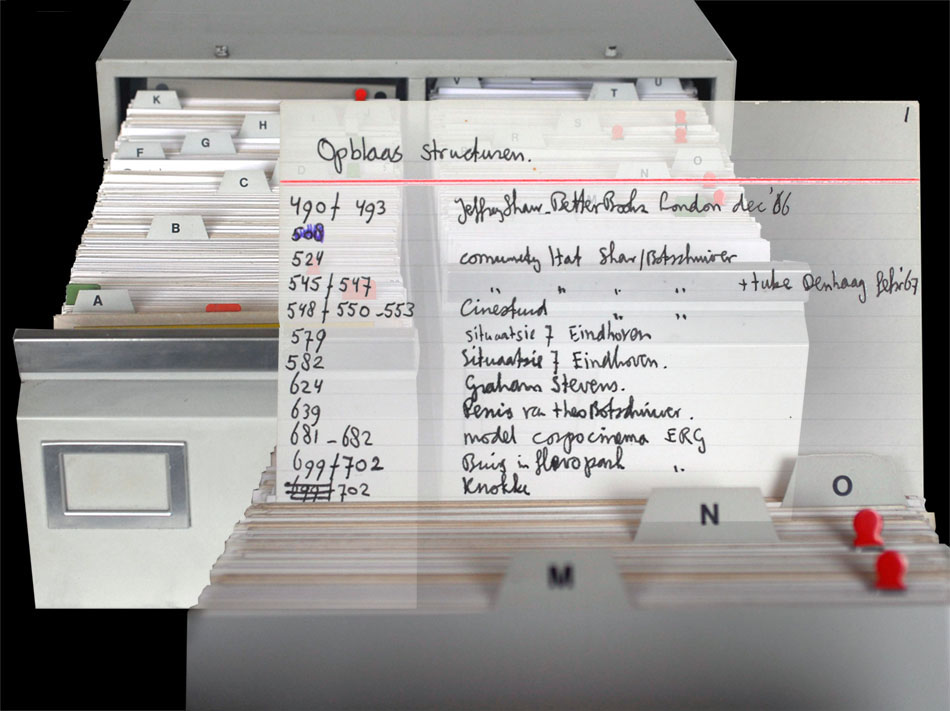 |
| My filing system, holding over four decades of mainly documentary photography covering a wide area of subjects: Amsterdam history, cultural happenings, visual arts, experimental music and theatre, jazz, artist portraits, pop-music, changing urban landscapes, squatters and other citizens movements, development policy in Southern African countries, shipping ... feel free to contact me with specific requests, via my email address. An impression can be seen below, move your cursor inside the picture frame to enlarge and travel through a few hundred pictures. A more stable way of looking at examples of singular photographs can be found in my on-line gallery, click here to go there.... |
 move mouse cursor inside picture frame to enlarge and hoover around ... move mouse cursor inside picture frame to enlarge and hoover around ... |
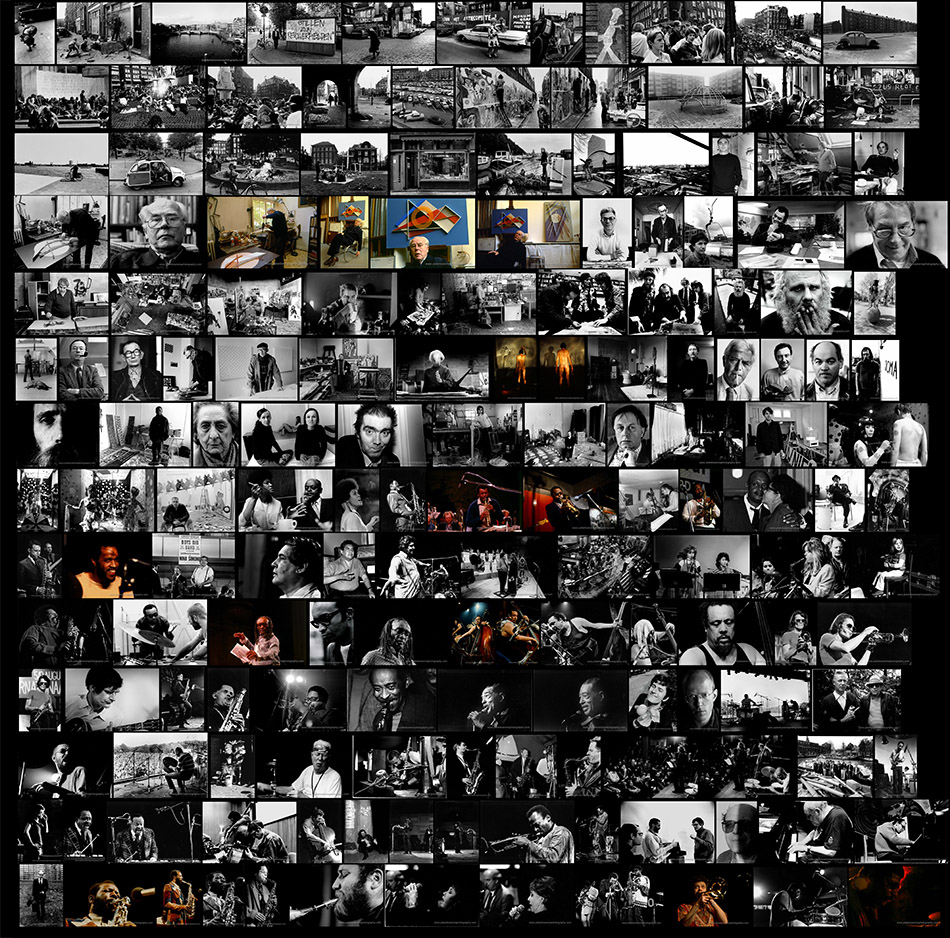 |
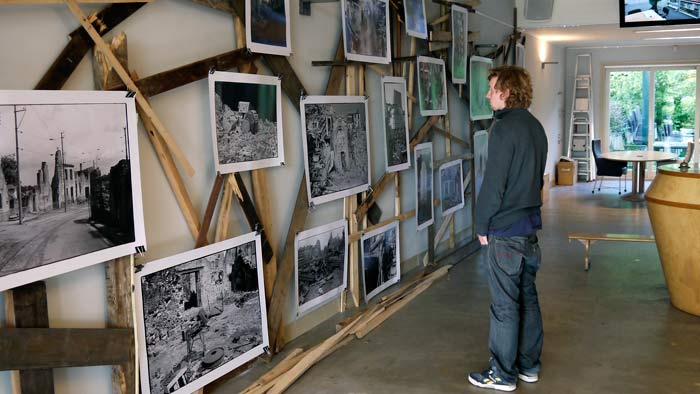 |
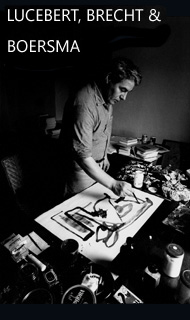 |
 September 2010: "Voor al in de jaren zeventig en tachtig van de vorige eeuw hield hij zich bezig met de sociale kant van de gebouwde omgeving: acties en ontruimingen, de dagelijkse gebeurtenissen in het Amsterdamse activisme. Maar ook toonde hij de troosteloze nieuwbouwwijken uit die tijd." For link click logo... September 2010: "Voor al in de jaren zeventig en tachtig van de vorige eeuw hield hij zich bezig met de sociale kant van de gebouwde omgeving: acties en ontruimingen, de dagelijkse gebeurtenissen in het Amsterdamse activisme. Maar ook toonde hij de troosteloze nieuwbouwwijken uit die tijd." For link click logo...
 Het is een en al treurigheid in galerie Weesperzijde. De treffende foto's van Pieter Boersma die daar worden geëxposeerd laten zien hoe er in de jaren zeventig en tachtig in Amsterdam werd ontruimd en gesloopt. Maar vooral ook wat dat heeft veroorzaakt. Die teurigheid blijft hangen bij het zien van de foto's over de troosteloze nieuwbouwwijken die in die periode uit de grond werden gestampt. For Link click logo... Het is een en al treurigheid in galerie Weesperzijde. De treffende foto's van Pieter Boersma die daar worden geëxposeerd laten zien hoe er in de jaren zeventig en tachtig in Amsterdam werd ontruimd en gesloopt. Maar vooral ook wat dat heeft veroorzaakt. Die teurigheid blijft hangen bij het zien van de foto's over de troosteloze nieuwbouwwijken die in die periode uit de grond werden gestampt. For Link click logo... |
 An exhibition together, with works by and about Lucebert (1924-1994), his son BRECHT and Pieter Boersma, containing photographs of demolitions, jazz and photo's of Lucebert. Centre of contemporary arts : A-cent-mètres-du-centre-du-monde, Perpignan. Click logo for exhibition text (in French)... An exhibition together, with works by and about Lucebert (1924-1994), his son BRECHT and Pieter Boersma, containing photographs of demolitions, jazz and photo's of Lucebert. Centre of contemporary arts : A-cent-mètres-du-centre-du-monde, Perpignan. Click logo for exhibition text (in French)... |
|
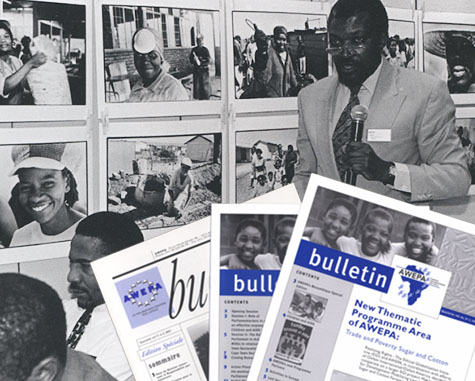 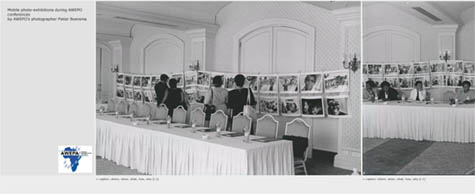 |
Since the 1980s Pieter Boersma works for AWEPA (European Parlementarians for Africa) making pictures for news bulletins, and reports. The photographs have also often been used for mobile or on the spot exhibitions. Click pictures above for details...
|
           |
        |
Photographs by Pieter Boersma from Portfolio Sixties Art on the web-site of Tjebbe van Tijen/ImaginaryMuseum Projects. Click a picture to go to the portfolio...
|
|
 "Foto's van de revolutie in de Nederlandse Jazz: Vanaf 1964 fotografeert Boersma. Hij bevindt zich dan in het gezelschap van een groep avontuurlijk denkende mensen waarvan Willem Breuker de meest bekende zal worden. Een grote liefde voor muziek in het algemeen en experimentele muziek in het bijzonder is de verbindende schakel. Albert Ayler, Edgar Varese, Anton Webern, Cecil Taylor, John Coltrane zijn mensen die 'ontdekt' worden." Voor begeleidende tekst en foto's klik logo ... "Foto's van de revolutie in de Nederlandse Jazz: Vanaf 1964 fotografeert Boersma. Hij bevindt zich dan in het gezelschap van een groep avontuurlijk denkende mensen waarvan Willem Breuker de meest bekende zal worden. Een grote liefde voor muziek in het algemeen en experimentele muziek in het bijzonder is de verbindende schakel. Albert Ayler, Edgar Varese, Anton Webern, Cecil Taylor, John Coltrane zijn mensen die 'ontdekt' worden." Voor begeleidende tekst en foto's klik logo ... |
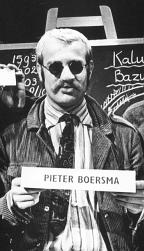 |
|
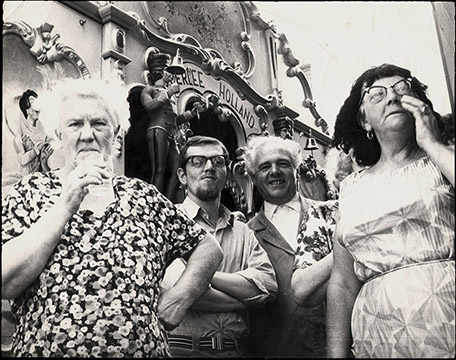 Willem Breuker 1944 - 2010 ~ herinneringen en documenten uit de periode 1966-1970 moeiteloos oscillerend tussen klunzig en grandioos door Tjebbe van Tijen met bijdragen van Pieter Boersma en Remko Scha. Click picture for link ....x Willem Breuker 1944 - 2010 ~ herinneringen en documenten uit de periode 1966-1970 moeiteloos oscillerend tussen klunzig en grandioos door Tjebbe van Tijen met bijdragen van Pieter Boersma en Remko Scha. Click picture for link ....x |
|
| last updated 23/10/2010 tj. (design Tjebbe van Tijen/ImaginaryMuseum Projects) |
| |
|
